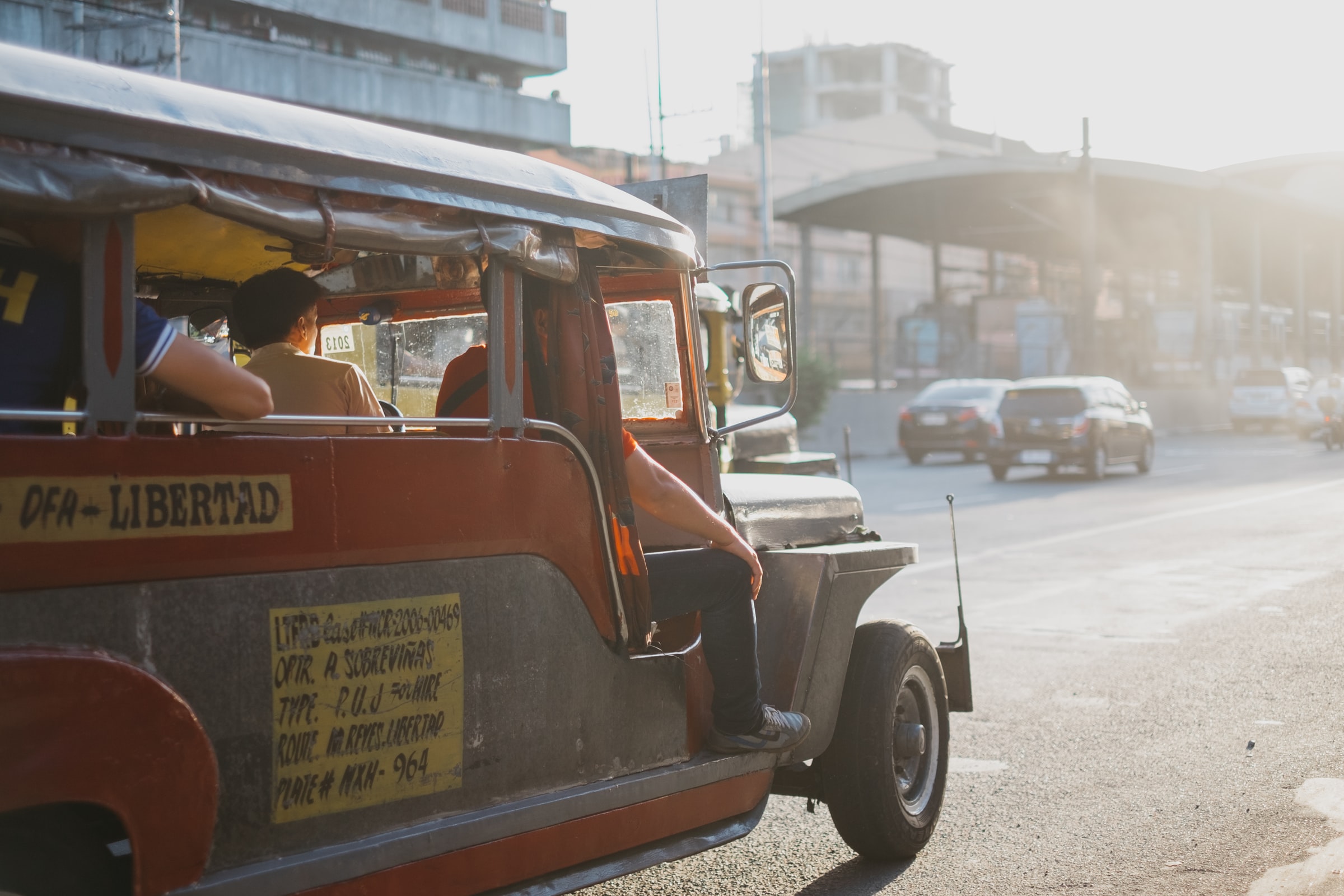Palace mulls hiring PUJ drivers as contact tracers

Currently, only limited public transportation is allowed under the general community quarantine (GCQ) and modified GCQ. (File photo: Yannes Kiefer/Unsplash)
MANILA – The government is considering giving an alternative livelihood to public utility jeepney (PUJ) drivers affected by the community quarantine amid the coronavirus disease (Covid-19) pandemic, Malacañang said on Wednesday.
Presidential Spokesperson Harry Roque bared there is a proposal to employ PUJ drivers as contact tracers to enhance local government units’ efforts to identify those who have come in contact with Covid-19 infection persons.
“We’re actually considering alternative livelihoods for them. There’s a suggestion that they be employed as contact tracers,” he said in an interview on ABS-CBN News Channel’s Headstart.
Roque said the government is looking to hire around 120,000 contact tracers nationwide to augment the existing over 30,000 contact tracers.
Currently, only limited public transportation is allowed under the general community quarantine (GCQ) and modified GCQ.
He said the government is also considering the complete reconfiguration of the traditional PUJs to comply with minimum health standards.
Since the traditional PUJ has front-facing seats, Roque said deploying this type of vehicle is “not in the immediate horizon.”
“It’s almost a physical impossibility to have social distancing when passengers face each other in a jeepney,” Roque said.
However, the government is considering the deployment of modern PUJs where the seating arrangement is similar to modern buses.
“These kinds of modern jeepneys might be deployed sooner than later. The traditional face-to-face jeepney, out of the question for now,” he said.
Currently, PUJ drivers also receive a fuel subsidy which covers 30 percent of their daily fuel consumption for three months. PUJ drivers will get 12 liters worth PHP360.
The Department of Transportation (DOTr) is also pushing for an economic stimulus package that would see a portion going to fuel subsidy, mitigating drivers’ lost income, and augmenting their operations. The bill is currently pending in Congress.
DOTr acted ‘expeditiously’
Roque, meanwhile, defended Transport Secretary Arthur Tugade from criticism that they lack resolve in addressing the lack of transport systems for commuters.
He said the Department of Transportation (DOTr) acted “expeditiously” to provide rides for passengers by deploying additional buses in commercial lanes and shuttle services for front line healthcare workers.
Citing Tugade, he appealed to employers and business owners to only allow half of their workforce to physically report for work.
“I think the response of Secretary Tugade in my yesterday’s briefing was an appeal to employers. Although we have opened the economy and the workforce can come back a 100 percent, it does not mean that we should let them into the work premises a 100 percent because we simply don’t have the capacity yet to provide public transportation,” Roque said.
He urged them to follow the example of government agencies that have only required 50 percent of their workforce to physically report for work while others are offered alternative work schemes.
“The appeal is for employers to resort to what the government is doing. Government is back a 100 percent but still on a 50-50 work arrangement where 50 percent of the workforce actually work from home and there’s a schedule where there’s a shifting of government personnel reporting for office,” he said.
While physical distancing remains among protocols to minimize the risk of catching and spreading Covid-19, Roque said public transportation will remain operating in a limited capacity.
“We will never get to the point that we can provide 100-percent transportation to what we used to have in the workplace,” he said.
He also said that health concerns will “take precedence over anything else”.
In an interview in PTV-4, he turned down calls for government officials to take public transport to understand the plight of the commuter saying he has already accepted the challenge in the past by taking the Metro Rail Transit-3.
“Ginawa ko na po yan dati either way babatuhin ka. So hindi ko na po gagawin muli ‘yan. Naintindihan po natin na mahirap talaga ang nangyayari sa ating mananakay (I have done that before, either way they’re going to criticize you so I’m not going to do that anymore. I understand that it’s really difficult for our commuters),” he said.
The gradual resumption of public transport in areas placed under GCQ will be done in two phases.
Phase 1, which covers June 1 to 21, allows the operation of trains and bus augmentation services, taxis, transport network vehicle services (TNVS), shuttle services, point-to-point buses with limited passenger capacity, as well as bicycles.
Tricycles will be allowed to operate in areas under GCQ with approval from concerned local government units.
However, provincial buses will remain banned from entering Metro Manila.
Phase 2, which covers June 22 to 30, will allow public utility buses, modern public utility vehicles, and UV Express units will be permitted to operate with limited passenger capacity.





















